The National World War I Museum and Memorial in Kansas City is home to the world's largest
collection of WWI artifacts, and it's a surprisingly good place to take kids. I
went with my family, and the museum provided complimentary admission so that I
could write about it here and for an article I'm working on for
Living Here Midwest. Here's why I think families should bring kids to the
National WWI Museum, and what else families should know before you go:
Today, one of the first things guests encounter inside on their way to main galleries is the glass bridge. Underneath the bridge are 9,000 silk poppies growing out of a painted field representing a WWI battlefield. The poppies serve as a reminder of the lives lost in WWI, inspired by the poem In Flanders Field by WWI surgeon John McCrae. Each of the 9,000 poppies represents a thousand combatant deaths, in total representing 9 million deaths in WWI, which is the low end of the estimate of military personnel who died in WWI.
The permanent collection of the National WWI Museum and Memorial includes a huge variety of artifacts from World War I including uniforms, firearms, artillery, medical equipment, photos, letters, documents, and much more. Throughout the museum, these pieces are displayed thoughtfully, amidst interpretive signage to help visitors make sense of what they're seeing.
The National WWI Musuem and Memorial is one of best places in the world to do WWI related research, which is unsurprising given the size of their collection! They have several research computers available for use on the main floor near the guest services desk, and they have a research library downstairs near the open storage displays. This would be a great place to research WWI for a school project, to find out what your ancestors did in the war, or just for someone interested in diving deeper into WWI topics. Access to the research center is by appointment only, but the staff at the National WWI Musuem and Memorial are super nice so do not hesitate to reach out to them and let them help you set up what you need!
To find out more, visit the National WWI Museum website or connect with them on Facebook or Instagram.
What is the National WWI Museum?
The National WWI Museum and Memorial is the home of the world's largest collection of WWI artifacts. The Museum and Memorial includes a permanent collection, traveling and temporary exhibits, a gift shop, a cafe, a research library, and the iconic Liberty Memorial Tower. While the Tower and its Courtyard are much older (1926), much of the current museum is new from renovations and expansion which happened while the museum was closed from 1994 to 2006. If like me, most of your school years were during that time, you probably never got to see it at all! My parents grew up in the Kansas City area in the 1960s and 1970s and neither of them had been before either. On top of that, in 2022 even more recent expansions and improvements began that will continue through 2025.
Why learning about WWI matters for kids
In a nutshell, I think it's important for kids to learn about history,
including the sad and scary parts of history like war, while they are with
their parents so we can help make sure they experience it in an
age-appropriate way and help them make sense of it in light of their specific
personality and life experiences and our family's values and beliefs.
War can be kind of abstract for kids to understand--or too scary. But it's
important for kids to know that resolving conflicts peacefully can help avoid
war, and to understand why that's so crucial. When people are too far removed
from war, it's easy to forget the costs of failing to resolve conflicts
peacefully.
I remember seeing the WWII memorial in Caen, in Normandy, France, when I was
8, and I will always remember running through the grass near the beach with my
brothers and seeing the huge divots that had been made by bombs decades
before. While some people might think that is too young, my parents made sure
the information that I saw was age appropriate and helped me understand it,
and I think it helped shape my worldview and led to my interest in
international relations and choice to get a political science degree!
Where is the National WWI Museum and Memorial?
The National WWI Museum and Memorial is in downtown Kansas City, very near to both
Union Station and Crown Center. The official address is 2 Memorial Drive,
Kansas City, MO 64108
There is free parking in the U-shaped drive that is in front of the National
WWI Museum and Memorial and in small lots on the museum's grounds. There are also parking
garages at both Union Station and Crown Center, and Kansas City public
transportation comes to the WWI Museum and Memorial.
Liberty Memorial Tower and Memorial Courtyard
After WWI, a group of Kansas Citians formed hoping to memorialize those who
had served and those who had died in the war. Beginning in 1919, the Liberty
Memorial Association rallied the community and made this project a reality.
They raised more than 2.5 million dollars in less than two weeks, an amount
equivalent to more than 40 million dollars today. They broke ground on the
Liberty Memorial in 1921, with dignitaries like President Calvin Coolidge,
General John J. Pershing, and officials from Great Britain, Italy, Belgium,
and France in attendance. Future president Harry Truman was also part of the
ceremony--but just as a humble representative of local veterans like himself.
Coolidge also attended the dedication ceremony of The Liberty Memorial in
1926, along with Queen Marie of Romania!
The limestone tower itself is 217 feet tall and was designed by architect
Harold Van Buren Magonigle. New York sculptor Robert Aitken carved 4 elaborate
Guardian Spirits representing Honor, Courage, Sacrifice, and Patriotism.
And surrounding the tower is a beautiful limestone plaza, including two
flat-topped limestone buildings that contain spectacular art, and elevators leading to the museum
underneath. The memorial courtyard area also features two stunning sphinxes. Each weighs 615 tons and stretches 32'
long. They both have their eyes covered with their wings; "Memory" while
facing East to shield from the horrors of the war in Europe, and "Future"
while facing West to hide away from tragedies yet to pass.
The entire memorial courtyard is one of the most stunning architectural pieces
in the Midwest, filled with beauty and meaning.
And there's a spectacular view of downtown Kansas City from the courtyard
around the tower, and from the top of the tower.
But as the 20th century wore on, the structure of the tower began to
deteriorate, making it dangerous for visitors to enjoy this spectacular view,
and by 1994 the monument was closed to the public for safety reasons. Luckily,
the KC public rallied again, and funded a massive renovation and expansion of
the memorial and museum, determined to see this landmark restored to
glory.
The Liberty Memorial and the National WWI Museum and Memorialwere finally reopened
in 2006 and the museum was designated as a National Historic Landmark. In
2004, Congress designated the museum officially as the nation's World War I
Museum, and in 2014 President Barack Obama officially proclaimed it "a World
War I Museum and Memorial."
Poppies and glass bridge
Today, one of the first things guests encounter inside on their way to main galleries is the glass bridge. Underneath the bridge are 9,000 silk poppies growing out of a painted field representing a WWI battlefield. The poppies serve as a reminder of the lives lost in WWI, inspired by the poem In Flanders Field by WWI surgeon John McCrae. Each of the 9,000 poppies represents a thousand combatant deaths, in total representing 9 million deaths in WWI, which is the low end of the estimate of military personnel who died in WWI.
Permanent Collection of the National WWI Museum and Memorial
The permanent collection of the National WWI Museum and Memorial includes a huge variety of artifacts from World War I including uniforms, firearms, artillery, medical equipment, photos, letters, documents, and much more. Throughout the museum, these pieces are displayed thoughtfully, amidst interpretive signage to help visitors make sense of what they're seeing.
There are also sections of reproduction trench to immerse visitors in what
life in the trenches would have felt like. Some improvements to the trench
exhibits are planned for later in 2024, but they're already pretty
impressive.
The museum had a nice collection of vehicles and weaponry that were favorites
with our kids.
The main gallery area also includes a theater where visitors can watch an
informational film about WWI.
Open Storage
Because the museum's collection is so large, not all of the artifacts can
actually be incorporated into the main gallery in a thoughtful way. But
instead of hiding them away in dusty storage, many of these items are now in
"open storage" in the lower level of the museum. Arranged together with other
similar artifacts on glass cases, these artifacts provide a fascinating look
at even more of the story of the first World War and of life on the homefront
during the war.
The Little War
Beginning the last week of February 2024, the National WWI Museum and Memorial is
showing a brand-new exhibit highlighting the experience of kids during the
war. I love that they're doing this, and I would definitely consider this a
must-see for families visiting with elementary school age kids or
preschoolers.
The cases include a variety of fascinating objects like children's clothes
that look like WWI soldiers and nurses, a tiny teddy given to a soldier by his
family to stay in his pocket and look out for him, and a large toy set that
looks like a WWI-era French village with American troops marching
through.
One of the really cool things about the exhibit is that each case has a "big
read" written at about an 8th grade level and a "little read" written at about
a 3rd grade level, so that young visitors can better understand what's
happening but at their own level.
Another really interesting touch is the hands-on area of the exhibit. The
staff at the National WWI Museum and Memorial reprinted some out-of-print children's books
from WWI that helped children understand what was going on. Kids visiting the
National WWI Museum and Memorial can read them with their parents or other adults, along
with several picture books from the gift shop. There's a cozy chair to sit
and read those books in, and there are floor puzzles made from WWI posters, and
dominoes to play.
Other Temporary and Traveling Exhibits at the National WWWI Museum and Memorial
The National WWI Museum and Memorial also hosts other temporary and traveling
exhibits. From June 2023 to April 2024, the museum is featuring an exhibit
called Bespoke Bodies that takes a deeper look at the history of prosthetics,
a subject that affects many veterans.
Starting in May 2024, the museum will be featuring a new exhibition called
Sacred Service that looks at the role of faith in WWI.
Over There Cafe at the National WWI Museum and Memorial
The Over There Cafe at the National WWI Museum and Memorial supports the work of the museum
and offers visitors tasty options for lunch. They have a variety of hot and
cold options including soups, sandwiches, bottled juices and drinks, and
fountain soda. There were also some good snacks, including chips and cookies.
The biggest hit with my kids was the red, white, and blue cookies (they had
white chocolate chunks, dried blueberries, and dried cranberries.) Like
everywhere we went in the museum, the staff at the Over There Cafe was
excellent when we went--helpful, efficient, and kind.
There were also nice bathrooms near the cafe and in a few other places in the museum.
Museum Shop at the National WWI Museum and Memorial
The National WWI Museum and Memorial has an excellent museum shop with everything from a
penny smashing machine to scholarly books on WWI-related topics. You can find
typical souvenirs like magnets, mugs, and glasses, and more unique options
like an entire section of poppy themed gifts. There is a wide selection of
nice t-shirts, sweatshirts, and hats. And there's a nice selection for
children, including aviator goggles, classic toy army men, WWI era toy planes,
plush horses and pigeons, picture books, and candy.
Research Center at the National WWI Museum and Memorial
The National WWI Musuem and Memorial is one of best places in the world to do WWI related research, which is unsurprising given the size of their collection! They have several research computers available for use on the main floor near the guest services desk, and they have a research library downstairs near the open storage displays. This would be a great place to research WWI for a school project, to find out what your ancestors did in the war, or just for someone interested in diving deeper into WWI topics. Access to the research center is by appointment only, but the staff at the National WWI Musuem and Memorial are super nice so do not hesitate to reach out to them and let them help you set up what you need!
Special Events at the National WWWI Museum and Memorial
The National WWI Museum and Memorial is known for its high-quality historical lectures, storytimes
for kids, living history reenactments, hands-on history events, and for their
Stars and Stripes Picnic on the museum lawn on the Fourth of July with live
music, fun food and souvenir vendors, and some of KC's best fireworks.
Find out more about the National WWI Museum and Memorial
To find out more, visit the National WWI Museum website or connect with them on Facebook or Instagram.

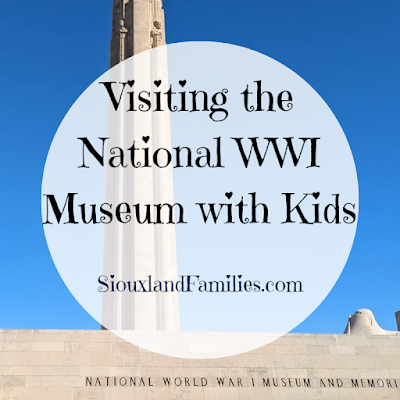

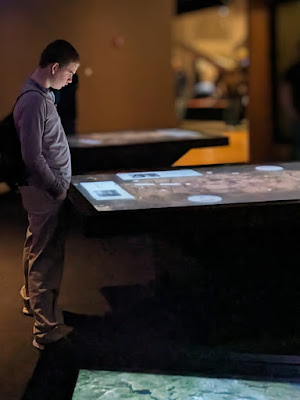


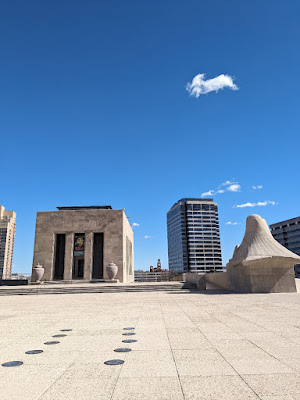
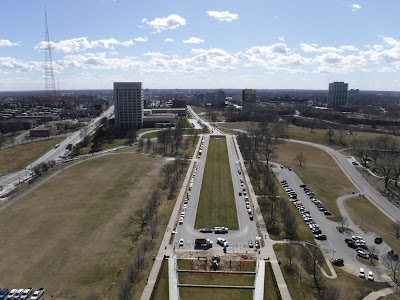


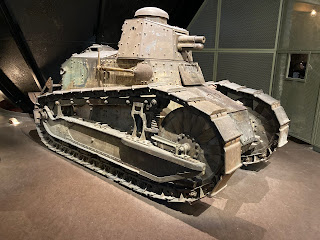
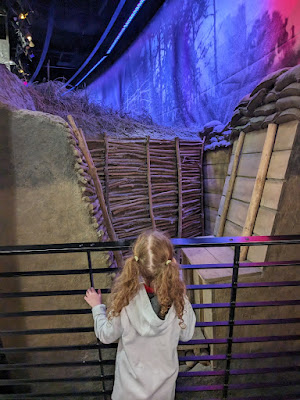
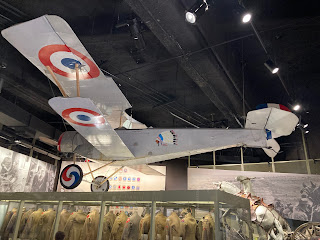
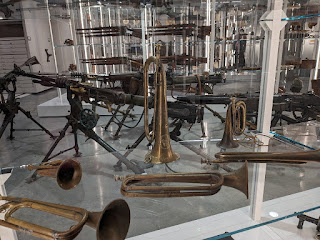
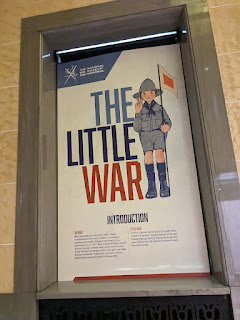




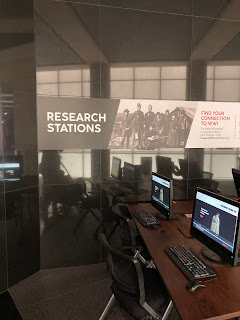

Comments
Post a Comment
Thanks for joining in the conversation! We can't wait to hear what you have to say. Some comments are moderated, so it may take some time for your comment to appear on the site. We encourage lively discussion, but will delete comments that are hostile, hateful, spammy, or rude.